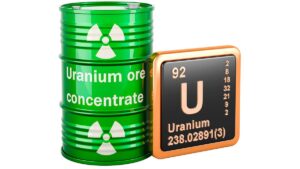Can iron ore stay above $US100 per tonne?

Brazilian footballer Neymar asks the crowd for details about the future direction of iron ore prices. (Getty Images)
Next to the gold price surge, iron ore’s resilience above $US100 ($145)per tonne has been one of the more notable themes since COVID-19 struck earlier this year.
Will it stay there? Analysts at UBS reckon developments in the iron ore production hub of Brazil will be the main swing factor heading into the second half of the year.
The bank’s forecast is for prices to drift lower into H2, but remain relatively well supported to finish 2020 at around $US86 per tonne.
“At US$100/t we think the market is pricing in further Brazilian disruption,” UBS said.
On the demand side, the analysts highlighted that prices have been supported by a relatively fast economic recovery in China, which consumes around 70 per cent of the world’s iron ore by itself.
This week, rebar steel prices in China jumped to their highest level in nine years, amid a combination of healthy demand and falling inventories.
UBS said it tracks a series of Chinese economic data points, “which all continue to trend higher towards pre-COVID-19 activity”.
These charts showing transport congestion figures and changes in PMI activity are a couple of useful examples:

But the main story in iron ore fundamentals is around supply, a narrative that dates back to Brazil’s Brumadinho dam disaster in January last year. The resulting imbalance saw benchmark iron ore prices rise above $US120/t in 2019.
UBS expects last year’s deficit to turn into a small surplus in 2020, but the effect of COVID-19 means uncertainty remains high in two key areas — Brazil exports, and steel demand outside of China.
The analysts said mobility restrictions have also crimped supply out of smaller producers including South Africa, Peru and India.
However, of most concern is Brazil. Supply from the world’s second largest exporter was also restricted in the first half of this year, but that was mostly due to inclement weather.
Now, “we note that COVID-19 is of particular concern for the country and may pose risk to the recovery in iron ore exports”, UBD said.
In effect, the pandemic is the key variable for iron ore prices in H2, in terms of both demand out of China (where activity is returning) and possible supply constrictions from Brazil.
Turning to Australia, UBS has seen no such COVID-19 complications, given the geographic isolation of most mines and the country’s relative success in containing the outbreak. As a result, “iron ore exports for Jan-May 2020 are up 4.5 per cent year-on-year”.
However, the analysts did highlight the recent spike in geo-political tensions between Australia and its biggest customer, which could give rise to increased efforts from Chinese policymakers to “reduce its dependence on contestable seaborne supply”.
“In particular, we note recent headlines concerning China’s peak steel association’s moves to start a fund for the purpose of shoring up local supply & China-owned foreign supply,” the analysts said.
To account for the increased uncertainty, UBS said its forecasts are now based off a more detailed model which breaks down demand side factors by geography (e.g. China, the Americas) and sector (e.g. property, infrastructure), offset agains the latest data for seaborne iron ore supply.
Related Topics
UNLOCK INSIGHTS
Discover the untold stories of emerging ASX stocks.
Daily news and expert analysis, it's free to subscribe.
By proceeding, you confirm you understand that we handle personal information in accordance with our Privacy Policy.








